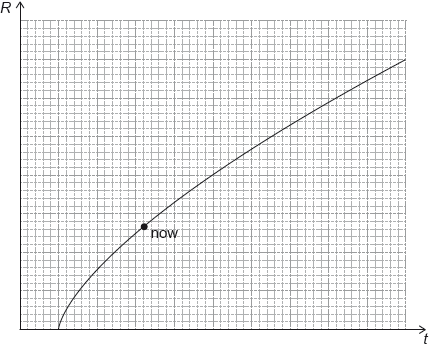| Date | May 2019 | Marks available | 2 | Reference code | 19M.3.HL.TZ2.22 |
| Level | Higher level | Paper | Paper 3 | Time zone | 2 |
| Command term | Show that | Question number | 22 | Adapted from | N/A |
Question
The homogeneous model of the universe predicts that it may be considered as a spherical cloud of matter of radius r and uniform density ρ. Consider a particle of mass m at the edge of the universe moving with velocity v and obeying Hubble’s law.
Justify that the total energy of this particle is .
At critical density there is zero total energy. Show that the critical density of the universe is: .
The accepted value for the Hubble constant is 2.3 × 10−18 s−1. Estimate the critical density of the universe.
Markscheme
total energy=kinetic energy+potential energy
OR
total energy= ✔
substitution of M = ✔
«Hence answer given»
Answer given so for MP2 look for clear evidence that MUniverse is stated and substituted.
substitutes H0r for v ✔
«total energy = 0»
✔
«hence ρc = »
Answer given, check working carefully.
9.5 × 10−27 « kgm–3» ✔
Examiners report
The vast majority of the candidates could state that the total energy is equal to the sum of the kinetic and potential energies but quite a few did not use the correct formula for the gravitational potential energy. The formula for the mass of the sun was usually correctly substituted.
This was a relatively easy demonstration given the equation in 22a. However many candidates did not show the process followed in a coherent manner that could be understood by examiners.
The question was well answered by many candidates.


